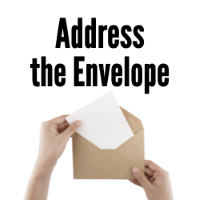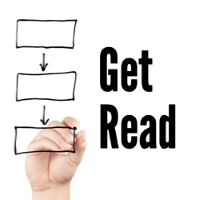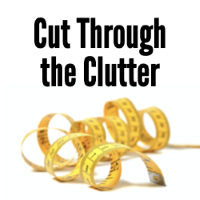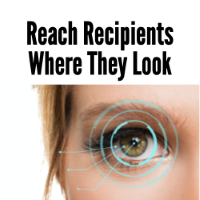Learn to write better email newsletters, marketing emails
Two thirds of email recipients open your email on their smartphones, not their laptops. Some 7% read your email newsletters in the bathroom. (And the other 93% are lying.)

Problem is, reading your email newsletter on the small screen is like reading War and Peace through a keyhole. It’s not easy to get the word out on a 5.5” rectangle.
“This workshop is invaluable. Ann’s information and techniques are rooted in research. She shows you how to write better emails rather than just tells you what to do and why.”
— Chelsea Ornelas, marketing and public relations lead, Staples
Read more rave reviews
When reading emails on their mobile devices, recipients:
- Click 40% less often (Mailchimp). There go your click-through rates.
- Are more likely to unsubscribe. More than half of consumers have unsubscribed from brand emails because they didn’t work well on mobile (Litmus).
- Find it 48% harder to understand content (R.I. Singh, et al., University of Alberta).
So how do you make the most of this difficult marketing channel?
Learn to write emails that get opened, read, clicked and shared at writing coach Ann Wylie’s Think Inside the Inbox email marketing course.

Agenda
In this digital-marketing course, you will learn how to create email-marketing campaigns that:

|
Address the EnvelopeSome 68% of emails aren’t getting opened — let alone read. In fact, an average of 276 emails languish unread in inboxes at any given time. That’s an increase of 300% in just four years. In this environment, what’s a communicator to do? In this session, you’ll learn how to grab attention in the inbox to get your online-marketing messages opened. Specifically, you’ll learn how to:
|
“From the shock value of the mobile-reading statistics to the humor and incisive recommendations, this class changes the way we write.”— Teresa McGaffic, senior copywriter, Golden I Credit Union |
|

|
Get ReadRecipients read, on average, fewer than 200 words of each email newsletter they receive. Assuming your recipients do open your message, what are the chances they’ll be paying attention to it? In this session, you’ll learn how to:
|
“This is definitely a must for all digital communications professionals.”— Chet Jechura, audience engagement manager, Bread for the World |
|

|
Cut Through the ClutterThe No. 1 piece of advice email recipients give a writer who writes email newsletter content is to keep it short. So how do you write concise emails that recipients will read? In this session, you’ll learn to:
|
“l thought it was really helpful! I was excited to come to class every day and gain more tools for my email-writing tool belt.”— Jocelyn Hernandez, senior marketing associate, Salesforce |
|

|
Reach Recipients Where They LookPeople skim 69% of their e-zines. They read only 19%. (That’s the good news. On mobile, they skim 74% of their e-newsletters.) In this environment, how do you reach the three-quarters of subscribers who don’t read our paragraphs? Before you click Send, make sure your email messages:
|
“Love it! Ann’s expertise has helped my writing in countless ways.”— Sarah Julian, director, communications, Oklahoma Public School Resource Center |
|
I’m ready to boost my email marketing-writing skills!
Whether you’re learning digital marketing, online marketing, email marketing or other marketing skills, you can polish your skills in Ann’s email-marketing writing courses:
- Book Ann to train your whole team in an in-house training program.
- Attend Think Inside the Inbox, Ann’s public email marketing campaign-writing master class.
- Browse Ann’s other Master Classes: Build your writing skills when you attend one of our public writing workshops.
Questions? Contact Ann.
